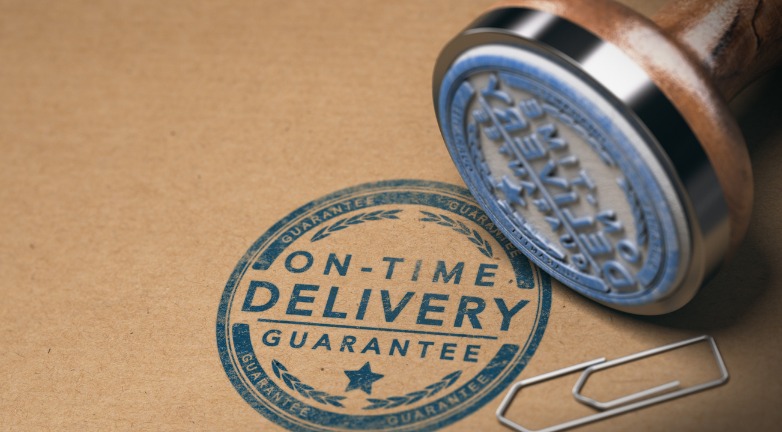Back in the days when my father and grandfather were in the shipping business, pretty much everything was done manually. It was difficult to figure out what things cost before you shipped them, and the process was very labor intensive. Fast-forward to today with information at our fingertips and countless tools available to small and midsized businesses to make the shipping process easier and more efficient. It can be overwhelming to say the least. Hopefully, the following do’s and don’ts can help you in your shipping journey.
- Do partner with a reliable carrier. Begin by asking for references from clients. Trustworthy companies should be more than willing to share contact information of past and present customers. Also, more sophisticated companies will have transportation management systems that, much like Expedia for travel, list current rates and service levels for a number of carriers. Shippers can see the options that fit their needs and budget. Another key feature is track-and-trace. While it seems like this would be standard, some carriers do not offer tracking support. Tracking enables you to maintain better control of your shipment and locate packages at any point of transit.
- Do identify a carrier’s resources. Some carriers specialize in specific types of shipping (business-to-business, residential, white-glove or low touch/low damage). It’s important to determine which carriers have the equipment necessary to properly and safely move your goods. Don’t be afraid to ask if they have experience shipping goods like yours and what steps they might take to ensure safety during transit. During this process, identify the type of shipping your company needs now as well as what it might need in the future. This will help you avoid completely restarting the carrier search as your requirements evolve.
- Don’t assume all products can be shipped. There are specific rules and regulations for each shipping location and shipment destination, and they vary across countries, states and nations. Always consult with the shipping carrier before sealing and sending a package to avoid delays, additional charges and other problems.
- Do ensure the carrier is compliant with federal rules and regulations. In order for a carrier to legally operate, it must be granted authority from the Federal Motor Carrier Safety Administration (FMCSA). This organization requires carriers to have specific insurance, keep a record of legal process agent documents, file specific registrations and be compliant with safety standards. Any business can access the FMCSA’s database to see a carrier’s safety record. If they have a poor compliance history, proceed with caution or reconsider using their services. To ensure a carrier is properly licensed, visit http://safer.fmcsa.dot.gov.
- Don’t forget proper packaging. I can’t stress enough how important it is to make sure a parcel is properly packaged to prevent damage. An easy and effective way to reinforce packaging is by taping the opening and seams of boxes with two-inch-wide clear, brown, reinforced or paper packing tape. Do not use cord, string, twine, duct tape, basic tape or masking tape. And never try to save money by reusing shipping boxes. With each shipment, cardboard boxes lose their structural integrity. Additionally, the product should not be able to shift in its package during transit, which means all empty space needs to be filled with newspaper, bubble wrap or heavy tissue paper. If your shipment is palletized, make sure the boxes are tightly and squarely stacked on the pallet. There should be no overhang, and the boxes should be tightly secured to the pallet with shrink wrap.
- Do understand the carrier’s limits of liability. Many people believe that, when a shipment is damaged in transit, the carrier’s basic liability program will protect its value. Unfortunately, this is a common misconception that often results in the client business absorbing the cost of the shipping mishap. Carrier liability is not the same as insurance. Understand what each party is responsible for so there are no surprises.
- Don’t overlook shipping insurance. Shipping insurance is optional, so it’s often ignored. From the moment a package leaves your business, it’s handled by numerous people and on myriad modes of transportation. Throughout its journey, there’s the possibility of human error or unforeseen damage to the package. With insurance, you are more likely to recover the full value of a damaged, lost or stolen shipment.
- Do select guaranteed delivery if the shipment needs to arrive by a specific date. A mistake I often see businesses make is relying on the delivery estimate. Without a guarantee, estimates are simply that — estimates.
- Don’t scrimp on speed. Consider air and expedited services. These offerings typically experience less handling and are given higher priority, ensuring a trauma-free delivery. Air and expedite are great options if you need to move valuable equipment long distances in a short period of time and when delay or damage could be costly.
Regardless of your industry or product, shipping can be expensive, time consuming and inconsistent. It’s up to you to determine how your shipping system operates, but the above do’s and don’ts should provide a solid foundation for smart, cost-effective decisions. To truly become shipping savvy, you’ll need to dedicate time to understanding the many options available for getting your products to their destinations on time and in good condition.



